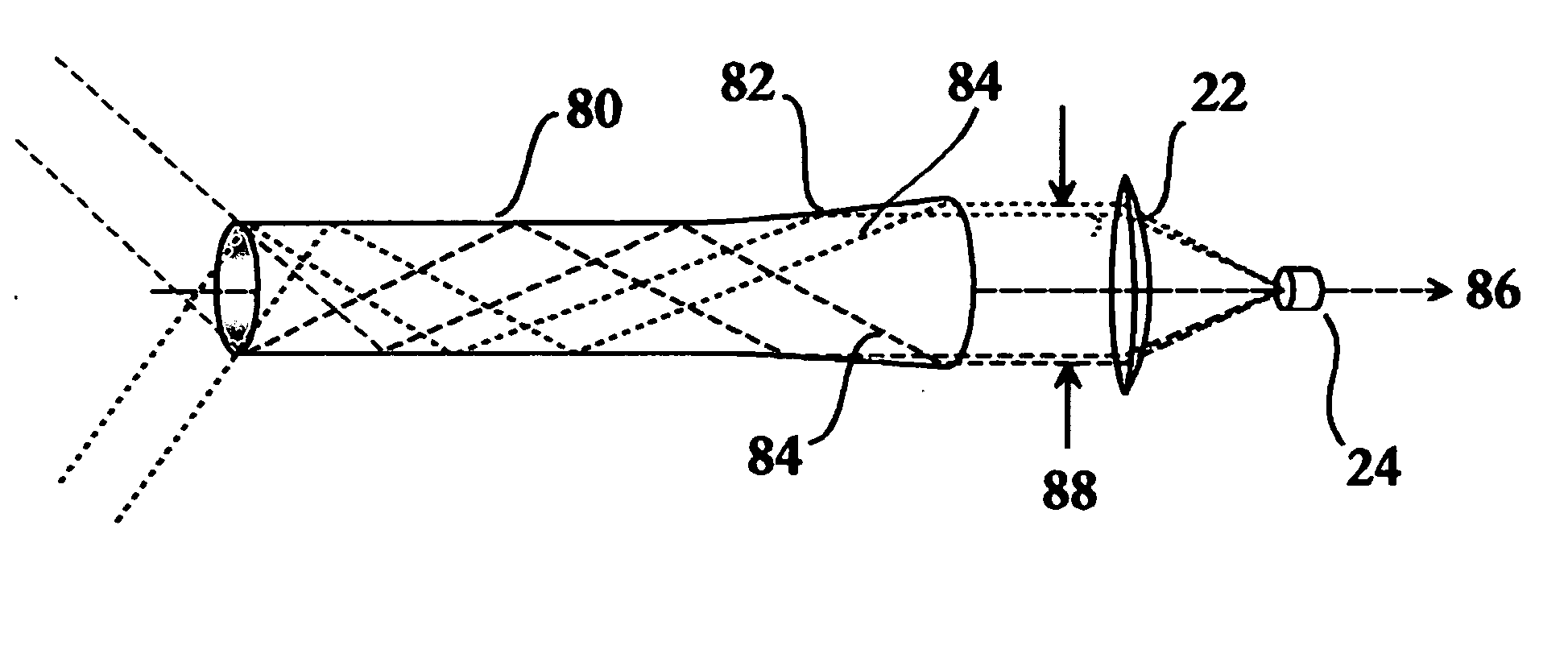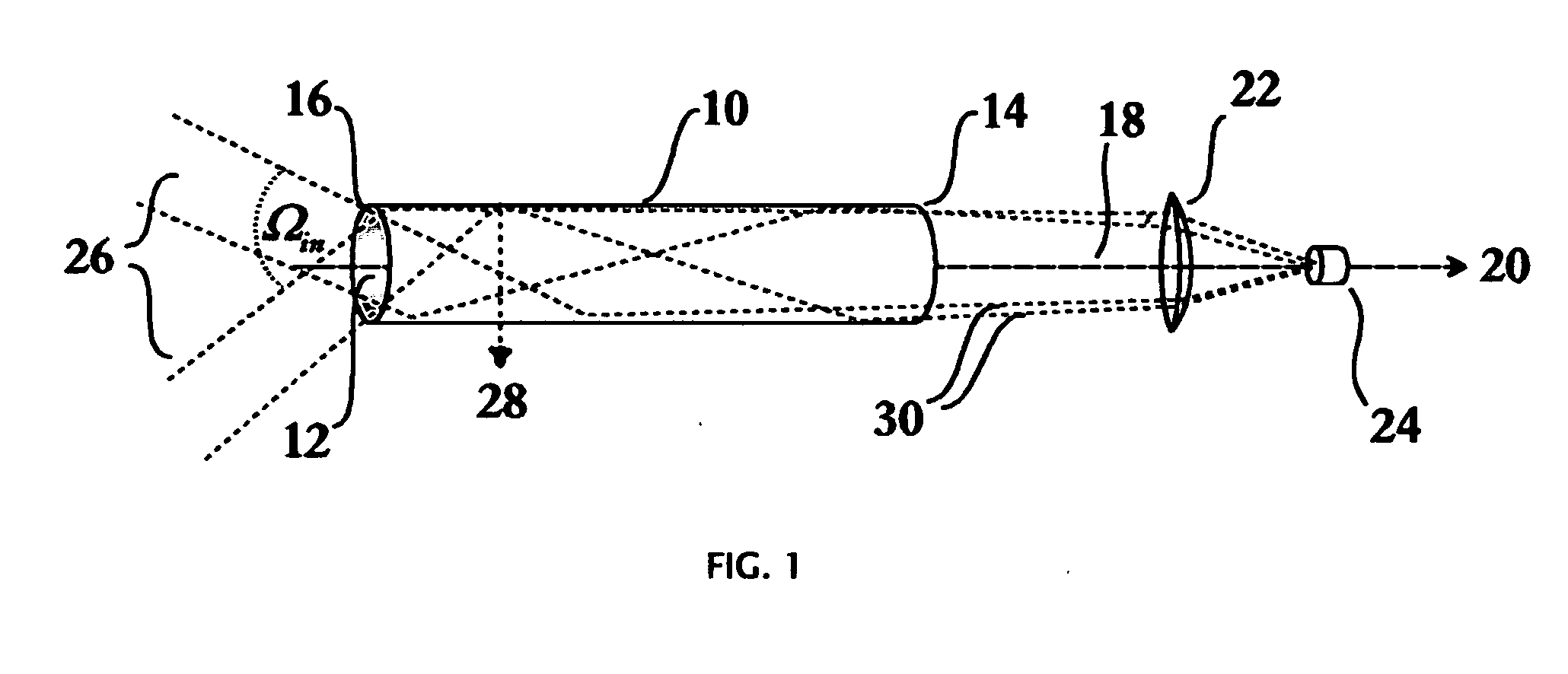Wide angle solar concentrator
a solar concentrator and wide angle technology, applied in the field of optical, solar energy, lighting, etc., can solve the problems of limited methods, not truly non-imaging, and only increase the importance of solar energy, and achieve the effect of efficient collection and concentrating solar energy
- Summary
- Abstract
- Description
- Claims
- Application Information
AI Technical Summary
Benefits of technology
Problems solved by technology
Method used
Image
Examples
Embodiment Construction
[0020]FIG. 1 shows a perspective view of a passive optical collection system constructed according to the present invention. More specifically collector tube 10 includes an optically diffractive medium 12 disposed on the inner surface thereof. This medium is designed to partially scatter, reflect, or diffract light of various wavelengths at an angle greater than the incident angle at which the light strikes the surface. The tube may be hollow or filled with a transparent or partially transparent medium. The net effect is that the output of the tube at a clear aperture 14 opposite the opening 16 where sunlight or other optical radiation is incident, is a beam 18 consisting of light rays which are substantially oriented in a direction parallel to the central axis 20 of tube 10. This beam thereafter impinges on a lens or similar optical element 22, which is designed so as to focus the collimated or nearly collimated beam 18 onto an optical receiver or collecting device 24. The lens ele...
PUM
 Login to View More
Login to View More Abstract
Description
Claims
Application Information
 Login to View More
Login to View More - R&D
- Intellectual Property
- Life Sciences
- Materials
- Tech Scout
- Unparalleled Data Quality
- Higher Quality Content
- 60% Fewer Hallucinations
Browse by: Latest US Patents, China's latest patents, Technical Efficacy Thesaurus, Application Domain, Technology Topic, Popular Technical Reports.
© 2025 PatSnap. All rights reserved.Legal|Privacy policy|Modern Slavery Act Transparency Statement|Sitemap|About US| Contact US: help@patsnap.com



